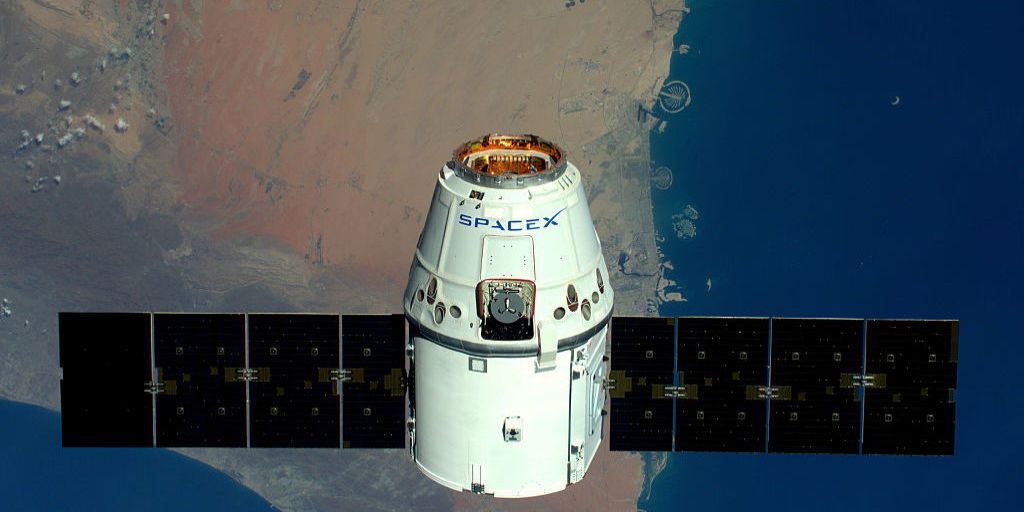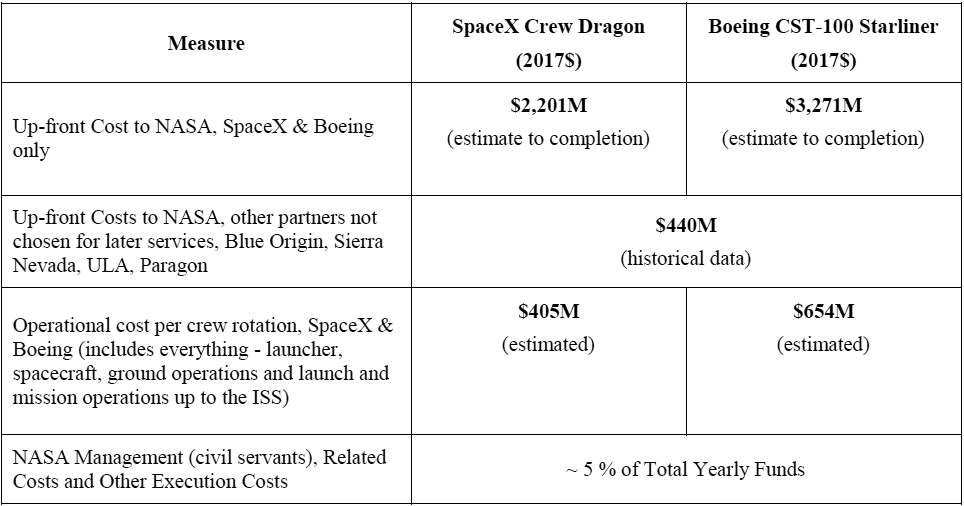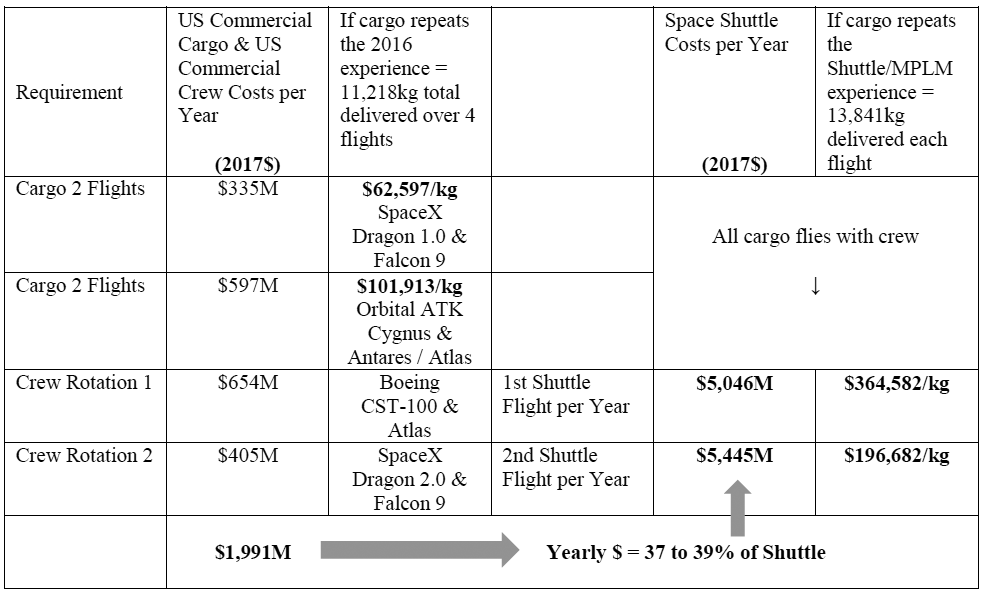NASA saved hundreds of millions of dollars from private companies

Dragon private transport ship manufactured by SpaceX
On May 25, 2012, a historic event took place: for the first time a private spacecraft docked to the International Space Station. It was a transport ship of SpaceX, one of the participants in the partner program of Commercial Orbital Transportation Services (COTS) from NASA.
NASA analyst at Kennedy Space Center Edgar Zapata (Edgar Zapata) presented to management a report (pdf) with an assessment of the economic results of NASA's cooperation with private companies SpaceX, Orbital ATK and Boeing. The report allows you to understand how profitable such cooperation is and decide on the participation of “private owners” in future missions.
The document provides an estimate of the cost of cargo delivery to the ISS, taking into account NASA's investments in each of the private companies and the cost of contracts. All data is shown in the chart as of June 2017.

As we see, taking into account all investments, development and operation costs, as well as accidents, cargo delivery to the ISS by SpaceX ships cost NASA approximately $ 89,000 per kilogram, considering all historical investments and launches. Using the same methodology for Orbital ATK and Cygnus transport ships gives a figure of $ 135,000 per kilogram.
To estimate the savings, NASA compares these figures with the cost of launching space shuttles, which previously delivered to the ISS multi-purpose procurement modules (MMS) in their cargo compartments. Delivery in this way would now cost $ 272,000 per kilogram.
Knowing the total weight of all delivered goods (11.2 tons), NASA can bring the total figure of the total taxpayer money savings, which was achieved through the involvement of private companies in the program Commercial Orbital Transportation Services.
NASA benefits are not limited to the delivery of goods. The document contains calculations for future savings on the delivery of astronauts to the ISS. Now they are forced to fly on Russian ships, but since 2019 the first manned launches of SpaceX Dragon and Boeing Starliner ships are planned. Based on publicly available data, NASA estimates the cost of shipping and returning the crew (four astronauts) to $ 405 million for SpaceX and $ 654 million for Boeing. This includes everything - booster, spacecraft, ground operations, launch, and so on. The table also shows the investments of all years in private companies made by NASA in connection with the preparation for these missions.

This data can be compared with historical records of the costs of the space shuttle program, which were much higher. Moreover, the lion's share of these costs remained unchanged regardless of the number of launches. NASA points out that with one launch per year, the costs were 80% compared to five launches per year.

The following is a summary table that shows NASA’s overall savings achieved by eliminating the space shuttle program and moving to contracts with private companies. As you can see, private traders are able to deliver cargo and astronauts into orbit for 37-39% of the cost of the space shuttle program.

NASA notes that the benefits from contracts with private companies are not only material. Now the agency has backup options for the delivery of cargo and astronauts in the event of a failure in the work of one of the contractors. There were no such backup options with space shuttles, except for Russian partners. There are other indirect benefits: by saving their own budget, NASA simultaneously stimulates the development of the rocket and space industry, space tourism, etc. The country has created dozens of private companies that are engaged in promising developments in the space field, create prototypes of rockets and spacecraft, residential modules for the ISS and alien habitable bases, robotic mechanisms for studying other space objects, delivering asteroids and so on. The COTS program and the transition to private astronautics really stimulated scientific and technical developments.
In addition, in this way, NASA supports the national economy. For example, the agency invested $ 140 million in the development of the Falcon 9 rocket. Thanks to this, SpaceX not only delivered NASA cargoes to the ISS at a lower price, but also completed more than 20 commercial launches, which otherwise would almost certainly have gone to foreign carriers.
“It can be argued that the US Treasury has already returned these initial investments only from additional taxes and jobs in the company SpaceX and its suppliers from the non-state sector,” concluded the report. - This is more than 1 billion dollars of economic activity (net difference), which otherwise would have almost completely gone abroad. This is very different from the economic benefits if NASA were the only user of the system. ”
The author of the report believes that cooperation with private companies can be continued in long-distance space missions to the Moon and Mars, although there is no consensus on this in the NASA administration.
All Articles